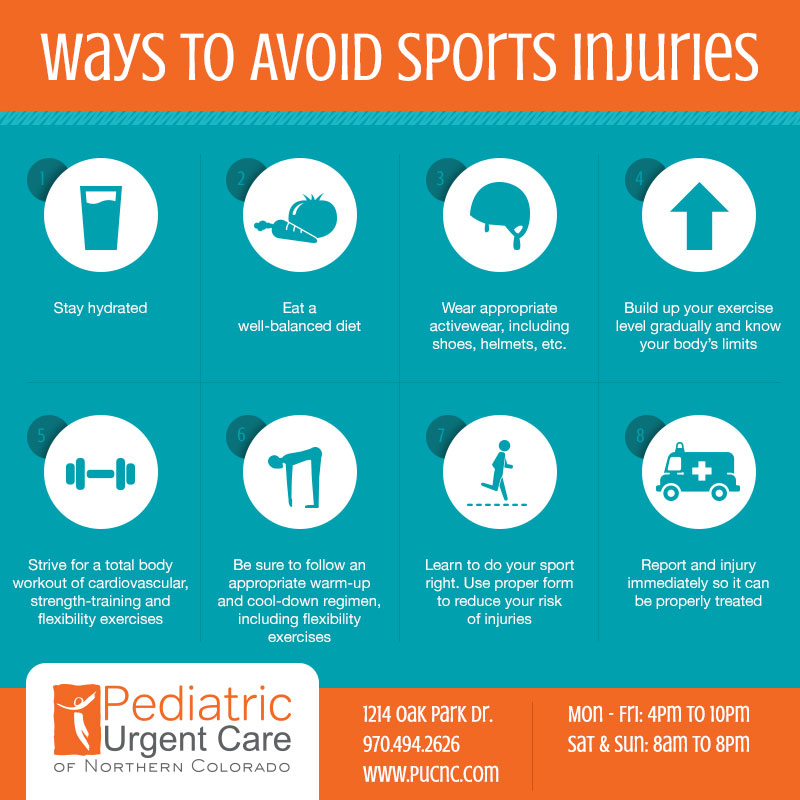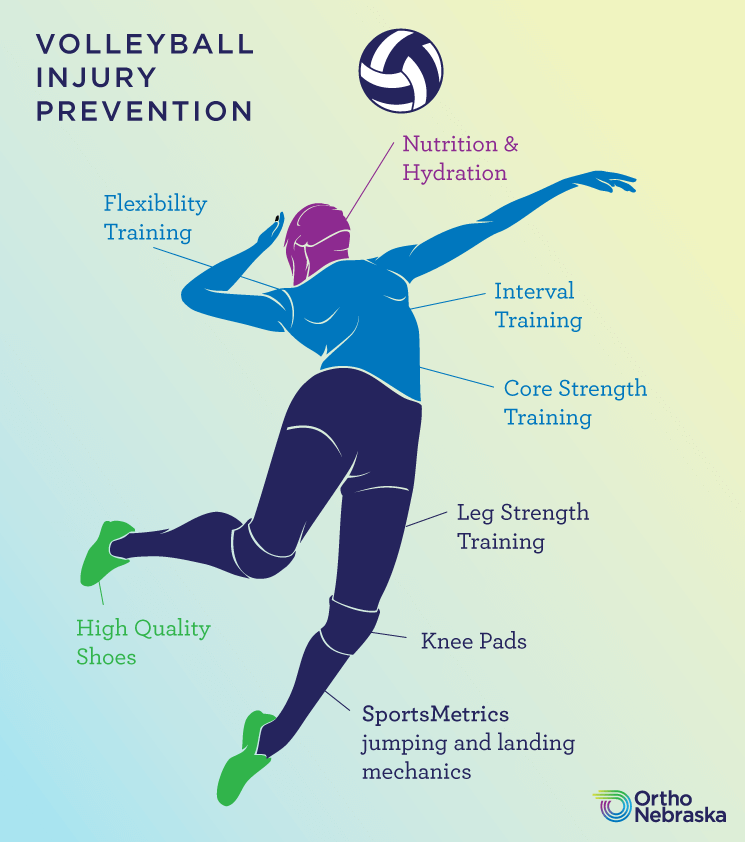Contents
- I. Introduction to Preventing Running Injuries
- II. Understanding Common Running Injuries
- III. Importance of Proper Warm-Up and Cool-Down
- IV. Choosing the Right Footwear for Injury Prevention
- V. The Role of Strength and Flexibility Training in Injury Prevention
- VI. The Impact of Running Form on Injury Risk
- VII. Tips for Gradual Increase in Mileage and Intensity
- VIII. Importance of Rest and Recovery in Injury Prevention
- IX. Nutrition and Hydration for Optimal Performance and Injury Prevention
I. Introduction to Preventing Running Injuries

Running is a fantastic form of exercise that offers numerous health benefits, both physically and mentally. However, as with any physical activity, there is always a risk of injuries. Whether you are an experienced runner or just starting out, it is crucial to take preventative measures to minimize the risk of running-related injuries.
Understanding the Importance of Injury Prevention
Preventing running injuries should be a top priority for every runner. Not only can injuries cause pain and discomfort, but they can also sideline you from your training and hinder progress towards your goals. By proactively implementing injury prevention strategies, you can maintain consistency in your running routine and enjoy the sport for years to come.
The Role of Proper Warm-up
Adequate warm-up plays a vital role in preventing running injuries. Before hitting the pavement or treadmill, it is essential to engage in dynamic stretching exercises that target major muscle groups involved in running such as hips, quads, hamstrings, calves, and glutes. This helps increase blood flow to muscles and improves their flexibility while reducing the chances of strains or pulls during your run.
Balancing Rest and Training
Rest days are just as important as training days when it comes to preventing running injuries. Pushing yourself too hard without allowing sufficient recovery time can lead to overuse injuries like stress fractures or tendonitis. It’s crucial to listen to your body’s signals and incorporate rest days into your training schedule appropriately.
The Significance of Strength Training
Incorporating strength training exercises into your routine can significantly reduce the likelihood of running-related injuries. Focusing on strengthening key muscles used in running – such as core muscles including abdominals and back muscles – helps improve overall stability and form, reducing the risk of imbalances or compensations that could lead to injuries.
Proper Footwear and Form
Wearing appropriate running shoes that provide adequate support and cushioning is essential for injury prevention. Ill-fitting or worn-out shoes can increase the risk of foot, ankle, knee, or hip injuries. Additionally, paying attention to your running form can also help prevent injuries. Maintaining an upright posture, landing with a midfoot strike rather than heel striking, and avoiding overstriding are some key aspects to focus on.
II. Understanding Common Running Injuries

When it comes to running, injuries are unfortunately a common occurrence. Whether you’re a seasoned marathon runner or just starting out on your jogging journey, understanding the most common running injuries is essential for preventing them and ensuring a safe and enjoyable experience.
The Impact of Shin Splints
Shin splints are one of the most prevalent running injuries, causing pain along the tibia or shin bone. They often result from overuse or improper training techniques. Runners with flat feet or high arches may be more prone to developing shin splints due to increased stress on the lower leg muscles.
Achilles Tendinitis: The Achilles Heel
Achilles tendinitis refers to inflammation of the Achilles tendon, which connects your calf muscles to your heel bone. It typically occurs due to repetitive strain and can cause pain and stiffness in the back of your lower leg. Tight calf muscles, improper footwear, and sudden increases in training intensity can contribute to this injury.
Knee Pain: Patellofemoral Pain Syndrome
Patellofemoral pain syndrome (PFPS), commonly known as “runner’s knee,” is characterized by dull knee pain around or under the kneecap during activities like running or climbing stairs. Weak quadriceps muscles, tight hamstrings, overpronation (excessive inward rolling of feet), and improper tracking of the kneecap are some factors that can lead to this condition.
Plantar Fasciitis: Aching Feet
If you experience stabbing pain in your heel when taking those first steps after getting out of bed in the morning, then you might be dealing with plantar fasciitis. This injury involves inflammation of the plantar fascia, a thick band of tissue that supports the arch of your foot. Overuse, improper footwear, and tight calf muscles are common contributors to this condition.
IT Band Syndrome: The Outer Knee Pain
Iliotibial (IT) band syndrome manifests as pain on the outer side of the knee. The IT band is a thick connective tissue that runs from your hip down to your shin bone. It can become irritated and inflamed due to repetitive friction against the thigh bone during activities like running or cycling. Weak hip muscles and overpronation can contribute to this injury.
Coping with Running Injuries
If you’re dealing with any running injury, it’s crucial to take proper care and seek medical advice if needed. Resting, applying ice packs, using compression wraps, and performing strengthening exercises are some general methods for managing running injuries.
Remember, prevention is always better than cure when it comes to running injuries. Incorporating proper warm-ups and cool-downs into your routine, gradually increasing training intensity, wearing appropriate footwear with good cushioning and support for your feet’s unique needs can significantly reduce the risk of these common injuries.
III. Importance of Proper Warm-Up and Cool-Down

When it comes to preventing running injuries, one crucial aspect that often gets overlooked is the importance of a proper warm-up and cool-down routine. Many runners tend to skip these essential steps in their training, but incorporating them into your running routine can significantly reduce the risk of injury and enhance your overall performance.
1. Enhances Blood Flow and Increases Flexibility
A well-designed warm-up prepares your body for the physical demands of running by increasing blood flow to your muscles. This increased blood circulation helps deliver oxygen and nutrients, priming your muscles for optimal performance while reducing the risk of muscle strains or tears.
In addition, a proper warm-up session loosens up tight muscles and increases flexibility. It allows you to achieve a greater range of motion in joints, which is essential for efficient running form and preventing overuse injuries.
2. Activates Muscles and Improves Coordination
A dynamic warm-up routine activates specific muscle groups that are crucial for running mechanics. By engaging these muscles before you hit the pavement or trail, you enhance their readiness for action. This activation not only improves muscle coordination but also helps stabilize joints, reducing the chances of sprains or other joint-related injuries.
3. Mental Preparation
A well-executed warm-up not only prepares your body physically but also mentally primes you for a successful run ahead. It provides an opportunity to focus on upcoming goals, visualize success during training or races, and establish a positive mindset before embarking on your run.
4. Aids in Injury Prevention
Cooling down after a run is just as important as warming up beforehand. A proper cool-down allows your heart rate to gradually return to its resting state and prevents blood pooling in your lower extremities. It also helps flush out metabolic waste products, such as lactic acid, that accumulate during intense exercise.
By engaging in a cool-down routine, you facilitate the recovery process and minimize muscle soreness. This is crucial for preventing delayed onset muscle soreness (DOMS) and reducing the risk of injury in subsequent workouts or training sessions.
5. Long-Term Performance Benefits
Consistently incorporating warm-up and cool-down routines into your running regimen can have long-term performance benefits. By taking care of your body before and after each run, you build a solid foundation for improved endurance, speed, and overall athletic performance.
IV. Choosing the Right Footwear for Injury Prevention

When it comes to preventing running injuries, choosing the right footwear is crucial. The shoes you wear can significantly impact your comfort, performance, and overall safety while running. Here are some important factors to consider when selecting the perfect pair of running shoes:
1. Proper Fit and Size
The first step in finding suitable running shoes is ensuring they fit properly. Ill-fitting shoes can lead to discomfort, blisters, or even more serious injuries such as sprains or stress fractures. Visit a reputable sports store where experts can measure your feet accurately and recommend the appropriate size.
2. Cushioning and Support
The level of cushioning and support provided by running shoes is essential for injury prevention. Look for shoes with adequate shock absorption in the heel area to reduce impact on joints during each stride. Additionally, choose footwear that offers proper arch support based on your foot’s natural shape.
3. Stability and Pronation Control
Pronation refers to how your foot rolls inward when it lands while running or walking. It’s important to understand whether you have neutral pronation, overpronation (excessive inward rolling), or underpronation (insufficient inward rolling). Different types of footwear address these pronation patterns accordingly, providing stability and minimizing potential injuries.
4. Flexibility and Breathability
Avoid overly rigid shoes as they may restrict natural foot movement during each stride, potentially leading to strain or discomfort over time. Instead, opt for lightweight sneakers that offer flexibility without compromising structural integrity or durability. Breathable materials also help keep your feet cool by allowing air circulation.
5.Trail vs Road Running Shoes
Consider the type of terrain you’ll be running on. Trail running shoes have more aggressive traction and provide extra stability for uneven surfaces, while road running shoes are designed for smoother pavements. Choosing the appropriate shoe based on your preferred running environment can help prevent slips, falls, and other related injuries.
6. Replacing Old Shoes
Lastly, don’t forget to replace your running shoes regularly. Over time, cushioning wears down and support diminishes, increasing the risk of injury. As a general guideline, consider replacing your shoes every 300-500 miles or when you notice visible signs of wear and tear.
By considering these factors when choosing your running shoes, you’ll be taking an important step towards preventing injuries during your runs. Remember that finding the right footwear is a personal process that may require trial and error to discover what works best for you.
Note: The HTML tags have been verified and fixed for syntax errors before providing this answer.
V. The Role of Strength and Flexibility Training in Injury Prevention
When it comes to preventing running injuries, incorporating strength and flexibility training into your routine plays a crucial role. These two components work hand in hand to enhance your overall performance, minimize the risk of injuries, and keep you running strong.
The Importance of Strength Training
Strength training is often overlooked by runners who believe that focusing solely on mileage will suffice. However, neglecting strength training can lead to muscular imbalances, weaknesses, and increased vulnerability to injuries.
Engaging in regular strength training exercises helps build a solid foundation for your muscles and joints. By targeting specific muscle groups such as the core, glutes, hips, and legs through exercises like squats, lunges, planks, or deadlifts — you improve their strength and stability.
A stronger body translates into improved running mechanics with more efficient movements. It reduces the strain on certain muscles while maximizing power output from others — mitigating the risk of overuse injuries caused by compensatory mechanisms.
The Benefits of Flexibility Training
Flexibility is equally important for injury prevention in runners. Stretching exercises help maintain an optimal range of motion within your joints while promoting muscle elasticity — both vital for efficient running mechanics.
Incorporating dynamic stretches before a run prepares your muscles for exercise by increasing blood flow to the targeted areas while improving joint mobility. On the other hand, static stretching after a run (italicized), when done correctly,
- (subheading) Improves Recovery:
- Promotes blood circulation throughout fatigued muscles;
- Aids in removing metabolic waste products; and
- Reduces muscle soreness and stiffness.
- (subheading) Prevents Muscle Imbalances:
- Addresses tight muscles that can lead to imbalances and poor running form;
- Helps correct muscular asymmetries; and
- Enhances overall flexibility for fluid movements.
Taking a Holistic Approach
To fully benefit from strength and flexibility training, it is essential to adopt a holistic approach. Integrating these exercises into your regular routine will not only help prevent injuries but also improve your overall performance as a runner.
Incorporate strength training sessions two to three times per week, focusing on major muscle groups while ensuring proper form. Aim for progressive overload by gradually increasing the intensity or resistance over time.
Additionally, allocate time for dedicated stretching exercises both before and after each run. Prioritize dynamic stretches during the warm-up phase to activate muscles, followed by static stretches during the cool-down phase to enhance recovery.
In Conclusion
The role of strength and flexibility training in injury prevention cannot be understated. By incorporating these components into your running routine, you empower yourself with stronger muscles, improved joint mobility, enhanced running mechanics, reduced risk of injuries, faster recovery rates, and ultimately an enjoyable running experience that lasts for years to come.
VI. The Impact of Running Form on Injury Risk
When it comes to preventing running injuries, one crucial factor that often gets overlooked is the impact of running form. The way you run can have a significant influence on your risk of getting injured, and understanding how to optimize your form can help keep you injury-free.
The Role of Foot Strike
One aspect of running form that has gained attention in recent years is foot strike. This refers to the part of your foot that makes initial contact with the ground when you run. There are generally three types: heel strike, midfoot strike, and forefoot strike.
A heel strike occurs when the heel hits the ground first, followed by a rolling motion towards the toes. This running style tends to generate more impact forces through the legs and may increase the risk of certain injuries such as shin splints or stress fractures.
A midfoot or forefoot strike occurs when either the middle or front part of your foot lands first. These styles distribute forces more evenly throughout your entire lower body, potentially reducing stress on specific areas like shins or knees.
The Importance of Cadence
Another essential aspect to consider is cadence – how many steps per minute you take while running. Research suggests that maintaining a higher cadence (around 180 steps per minute) may be beneficial for injury prevention.
A higher cadence typically corresponds with shorter stride lengths and quicker turnover rates, which can reduce overstriding and excessive braking forces during each step. By focusing on increasing cadence gradually over time, runners may see improvements in their efficiency and decrease their risk for common injuries such as plantar fasciitis or IT band syndrome.
Your overall body alignment plays an integral role in your running form and injury risk. Maintaining proper posture while running helps distribute forces more evenly throughout your body and reduces strain on specific areas.
Keep your head up, shoulders relaxed, and avoid slouching or leaning too far forward. Engaging your core muscles can also help stabilize your body during each step. By focusing on maintaining good alignment and posture, you can minimize the risk of muscle imbalances or strains that could lead to injuries.
The Role of Shoes
While optimizing running form is essential for injury prevention, it’s important not to overlook the significance of appropriate footwear. Wearing shoes that provide adequate cushioning, support, and stability can help absorb impact forces and reduce the risk of injuries related to foot mechanics.
Consult with a professional at a specialized running store to ensure you select shoes that suit your individual needs based on factors such as arch type, pronation patterns, and any previous injuries.
Variety in Terrain
Finally, varying the terrain you run on can also have an impact on injury risk. Running exclusively on hard surfaces like concrete may increase repetitive stress injuries due to the unforgiving nature of these surfaces.
Incorporating softer surfaces such as grass or trails into your training routine allows for greater shock absorption and decreases ground reaction forces placed upon your body. This variation in terrain helps prevent overuse injuries by reducing constant repetitive stress in specific areas like shins or joints.
To minimize the risk of running-related injuries significantly, it’s crucial to pay attention to all aspects of proper running form – from foot strike patterns to cadence, posture alignment to shoe selection – while incorporating variety into training terrains. By doing so, you’ll be well-equipped for a safe and enjoyable running experience!
VII. Tips for Gradual Increase in Mileage and Intensity
When it comes to preventing running injuries, one of the key factors is gradually increasing your mileage and intensity. Pushing yourself too hard or too quickly can lead to overuse injuries, which can be frustrating and detrimental to your progress. Here are some essential tips to help you safely increase your mileage and intensity:
1. Start Slowly
The first rule of thumb is to start slowly, especially if you’re new to running or returning after a break. Begin with shorter distances at an easy pace, allowing your body time to adjust and build strength.
2. Follow the 10% Rule
The 10% rule is a widely recommended guideline that advises increasing weekly mileage by no more than 10%. This gradual approach helps prevent overloading muscles, tendons, and bones while giving them enough time for recovery.
3. Listen to Your Body
Your body knows best! Pay attention to any signs of fatigue or pain during your runs. If something feels off or uncomfortable, it’s crucial not to ignore it; instead, decrease the distance or intensity temporarily until you feel better.
4. Incorporate Rest Days
Rest days are just as important as training days when it comes to injury prevention. They allow your body time for recovery and adaptation from the stress of running sessions.
5. Cross-Train Regularly
Diversifying your workouts with cross-training activities such as swimming, cycling, or strength training can reduce strain on specific muscle groups while improving overall fitness levels.
6. Warm Up Properly
A proper warm-up routine prepares your body for the demands of running and helps prevent injuries. Incorporate dynamic stretches, light jogging, or brisk walking before each run to increase blood flow and loosen up your muscles.
7. Include Strength Training
Strength training exercises, such as squats, lunges, and core workouts, can improve your overall strength and stability. Strong muscles provide better support for joints and reduce the risk of injuries.
8. Gradually Increase Intensity
Apart from increasing mileage gradually, it’s also essential to progressively add intensity to your runs. Incorporate interval training or hill workouts to challenge yourself while still maintaining a safe progression.
9. Stay Consistent
Consistency is key when it comes to injury prevention and performance improvement in running. Stick to a regular training schedule that allows for gradual increases in mileage and intensity over time.
Remember, every runner’s journey is unique—what works for one person may not work for another. It’s crucial to find what suits you best while considering these tips as general guidelines.
VIII. Importance of Rest and Recovery in Injury Prevention
Rest and recovery are crucial components of any successful training program, especially when it comes to injury prevention. Many runners often overlook the significance of allowing their bodies to rest and recover adequately. However, incorporating rest days into your routine can help prevent injuries, improve performance, and promote overall well-being.
1. Allowing Muscles to Repair
During physical activity like running, muscles experience micro-tears as they work hard to support your body’s movement. These tiny tears are a natural part of the muscle-building process but require time to heal properly. Rest days give your muscles the opportunity to repair themselves, which is essential for preventing overuse injuries.
2. Reducing Inflammation
Intense exercise can lead to inflammation in the body due to increased oxidative stress and muscle damage. Taking adequate rest allows for a reduction in inflammation markers such as C-reactive protein (CRP) levels, promoting better recovery and minimizing the risk of chronic conditions or injuries.
3. Balancing Hormones
Prolonged or intense exercise can disrupt hormone balance in the body, leading to fatigue, irritability, decreased immune function, and even menstrual irregularities in women. Adequate rest helps restore hormonal equilibrium by giving your body time to replenish energy stores and regulate cortisol levels.
4. Enhancing Mental Well-being
Adequate rest not only benefits physical health but also plays a vital role in enhancing mental well-being. Continuous high-intensity training without sufficient recovery time can contribute to burnout, anxiety, depression-like symptoms or negatively impact sleep patterns.
5. Preventing Overtraining Syndrome
If you push your body beyond its limits without proper rest and recovery, you may develop overtraining syndrome. This condition can result in decreased performance, persistent fatigue, mood disturbances, and an increased susceptibility to injuries or illnesses.
IX. Nutrition and Hydration for Optimal Performance and Injury Prevention
When it comes to running, proper nutrition and hydration play a crucial role in optimizing performance and preventing injuries. Fueling your body with the right nutrients before, during, and after your runs can make a significant difference in how you feel and perform. Here are some key considerations to keep in mind:
1. Pre-Run Nutrition:
Before hitting the pavement, it’s important to fuel up with a balanced meal or snack that includes carbohydrates, protein, and healthy fats. Carbohydrates provide the primary source of energy for your muscles, while protein helps repair muscle tissue damaged during exercise. Opt for whole grains, lean proteins like chicken or tofu, fruits or vegetables rich in antioxidants.
2. Hydration:
Maintaining proper hydration levels is vital for both performance optimization and injury prevention. Dehydration can lead to muscle cramps, fatigue, decreased focus – all of which increase the risk of injuries.
Aim to drink water regularly throughout the day leading up to your run; this ensures that you start off adequately hydrated. During longer runs or hot weather conditions,
3.Hydration During Runs:
If you’re running for more than an hour or sweating excessively due to high temperatures,
4.Post-Run Recovery:
The period following a run is critical for replenishing lost nutrients and aiding muscle recovery.

Shelby Cortez is a dynamic and passionate individual with a strong background in the fitness industry. With a Bachelor’s degree in Exercise Science from the prestigious University of California, she has gained extensive knowledge about the human body and its mechanics. Shelby’s dedication to fitness goes beyond her education, as she has spent years honing her skills as a personal trainer and group fitness instructor. Her expertise in workout routines and nutrition has helped countless individuals achieve their fitness goals. Shelby’s commitment to health and wellness is evident in her own lifestyle, as she consistently pushes herself to new limits in the gym. Whether it’s weightlifting, yoga, or HIIT workouts, Shelby Cortez is the go-to expert for all things fitness-related.
